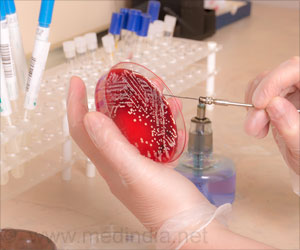Genes that make ribosomes is indicative of ecological strategies of bacteria that favor either rapid or efficient growth.

‘Bacterial species that make efficient use of carbon have far fewer copies of the ribosomal RNA genes.’





Microbiomes are the communities of microorganisms that live on and in people, plants, soil, oceans and the atmosphere and maintain healthy function of diverse ecosystems, influencing human health, climate change, food security and other factors.Energy-hoarding bacteria, on the other hand, have far fewer copies of the genes used to make ribosomes, the tiny factories that assemble amino acids into proteins inside cells.
"Much like the tradeoff between power and efficiency in internal-combustion engines, we found that the number of genes that make ribosomes is indicative of ecological strategies of bacteria that favor either rapid or efficient growth," said University of Michigan microbiologist Thomas Schmidt.
"To our knowledge, this is the first robust evidence linking the number of these ribosomal genes to bacterial growth rate and growth efficiency. These findings help establish a foundation for predicting the behavior of microbes in response to the expanding impact of human activities on microbiomes--those associated with the human body as well as in other environments."
The results are summarized in a paper scheduled for online publication in the journal Nature Microbiology.
Advertisement
In the growth-rate study, Schmidt and his colleagues conducted a comparative analysis of genomes from 1,167 bacterial species. In each genome, they counted the number of copies of the genes that code for the RNA molecules in ribosomes. The number of copies varied from 1 to 15 per bacterial genome.
Advertisement
The number of ribosomal RNA genes in bacterial genomes "predicts two important components of reproduction--growth rate and growth efficiency," the authors wrote. "These insights...will be essential if we are to ever manage microbiomes for human and environmental health."
Previous studies showed that soon after the 2010 Deepwater Horizon oil spill, there was a bloom of hydrocarbon-degrading bacteria containing nine copies of the ribosomal RNA genes. In terrestrial environments, bacteria that responded quickest to the addition of 2,4-D, an herbicide that is metabolized by bacteria, had more copies of the ribosomal RNA genes than those that responded slowly.
Source-Medindia










